Journal performance in 2021-2022
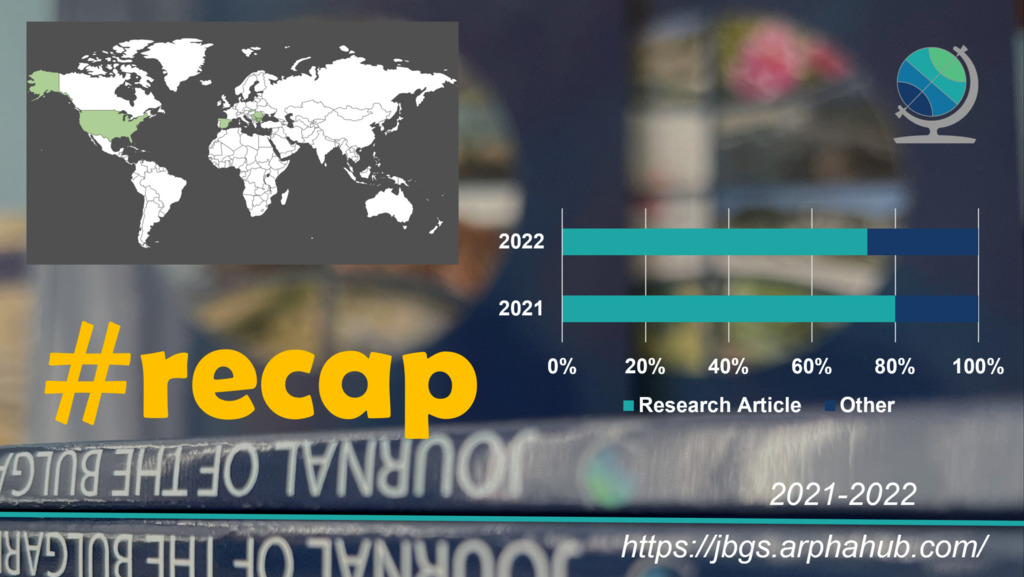
Overview:
Journal of the Bulgarian Geographical Society (JBGS) is fast approaching contemporary international standards in scientific publishing process. Since early 2021, it’s transfer from i) a predominantly Bulgarian to entirely English language journal, and from ii) analogous production mode to a highly-technologic one in the face of the Pensoft Publishers’ ARPHA platform (Authoring – Reviewing – Publishing – Hosting – Archiving), JBGS has significantly improved its statistics compared to the pre-transformations period. More specifically, submissions number remained stable, but manuscript rejection increased twice (Fig. 1), article types have been diversified with a predominance of the original research article (Figs 2-3), international coverage has been ensured (Fig. 4), article views increased several times (Figs 5-6), turnaround periods of article production have been significantly improved (Fig. 7).
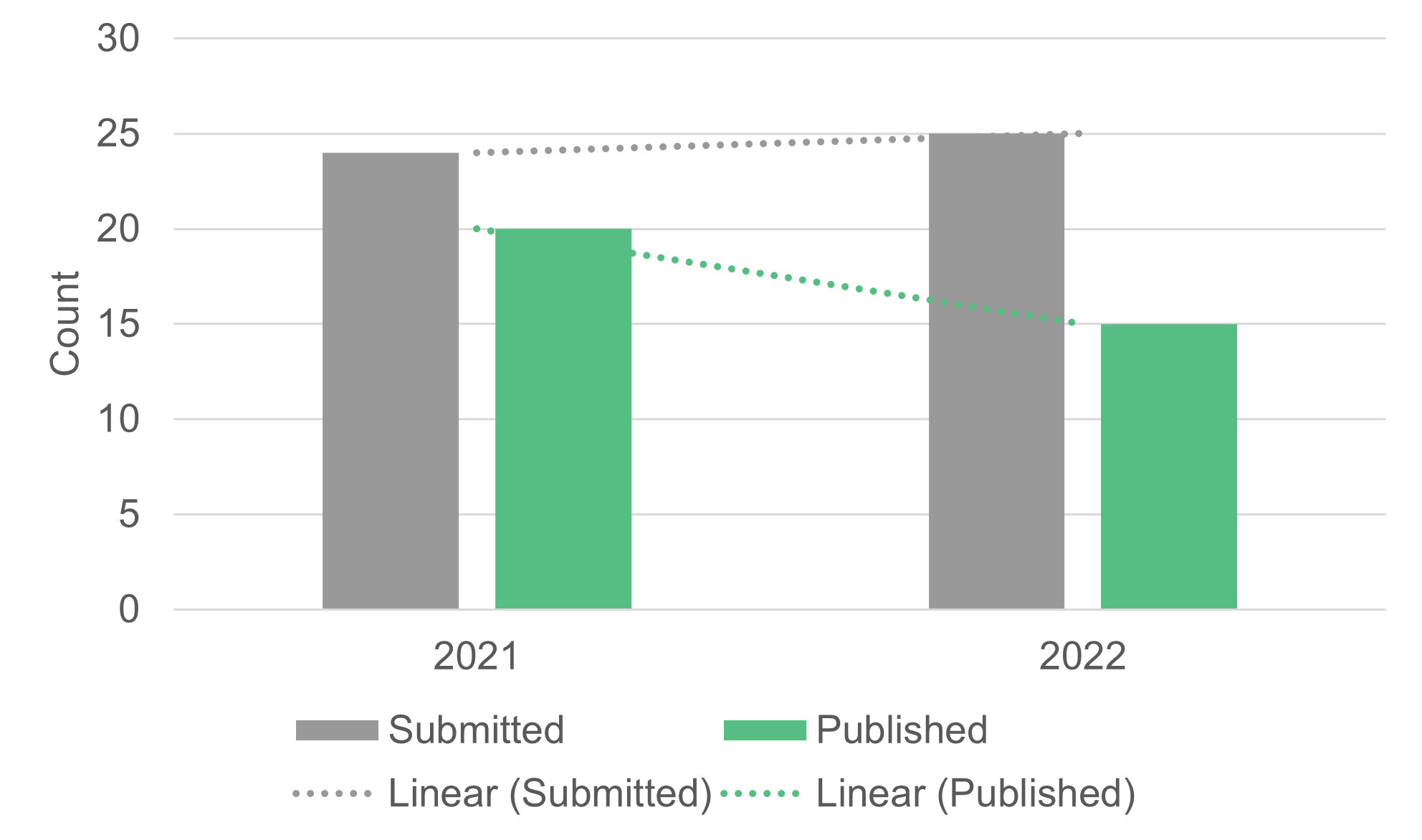
Figure 1. Manuscript flow.
Published articles:
The total number of published articles for the last two years consists of 35 documents, distributed between 4 journal volumes as follows: vol. 44 (2021) – 10 articles, vol. 45 (2021) – 10 articles, vol. 46 (2022) – 7 articles, and vol. 47 (2022) – 8 articles. In general, these statistics correspond to the average numbers for the previous period of 2018-2020 (Nedkov et al, 2020). The number of published articles in the first half of 2022 was slightly decreasing due to transformations in quality control and transfer of selected manuscripts for publishing in early 2023.
Dominant article type of publications for both years – 2021 and 2022, is the original research article (Fig. 2). This type of article shares 75-80% of all published documents (Fig. 3) which is twice more than the previous period (2018-2020) according to Nedkov et al, (2020) (fig. 4) and Nedkov et al, (2021).
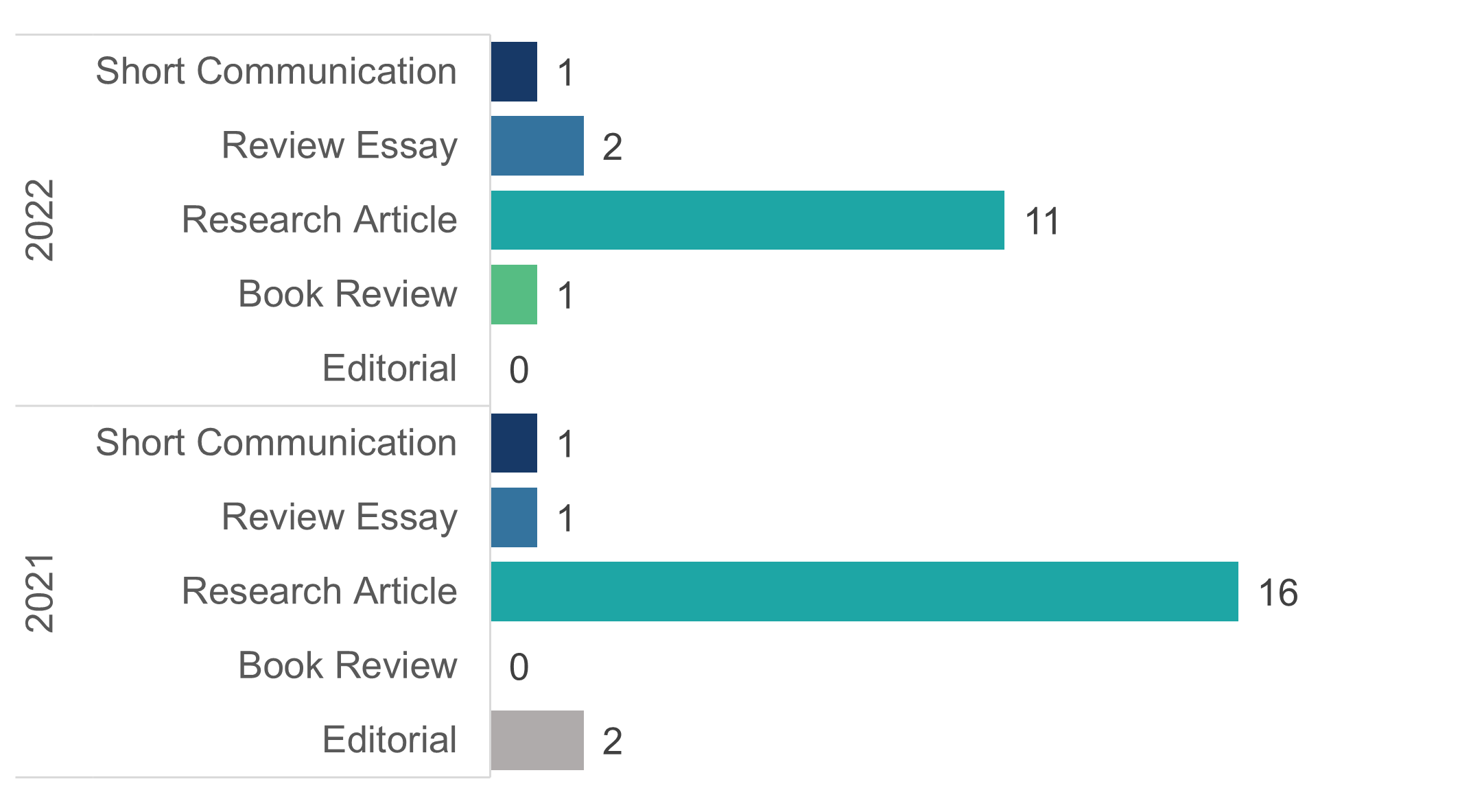
Figure 2. All published article types.
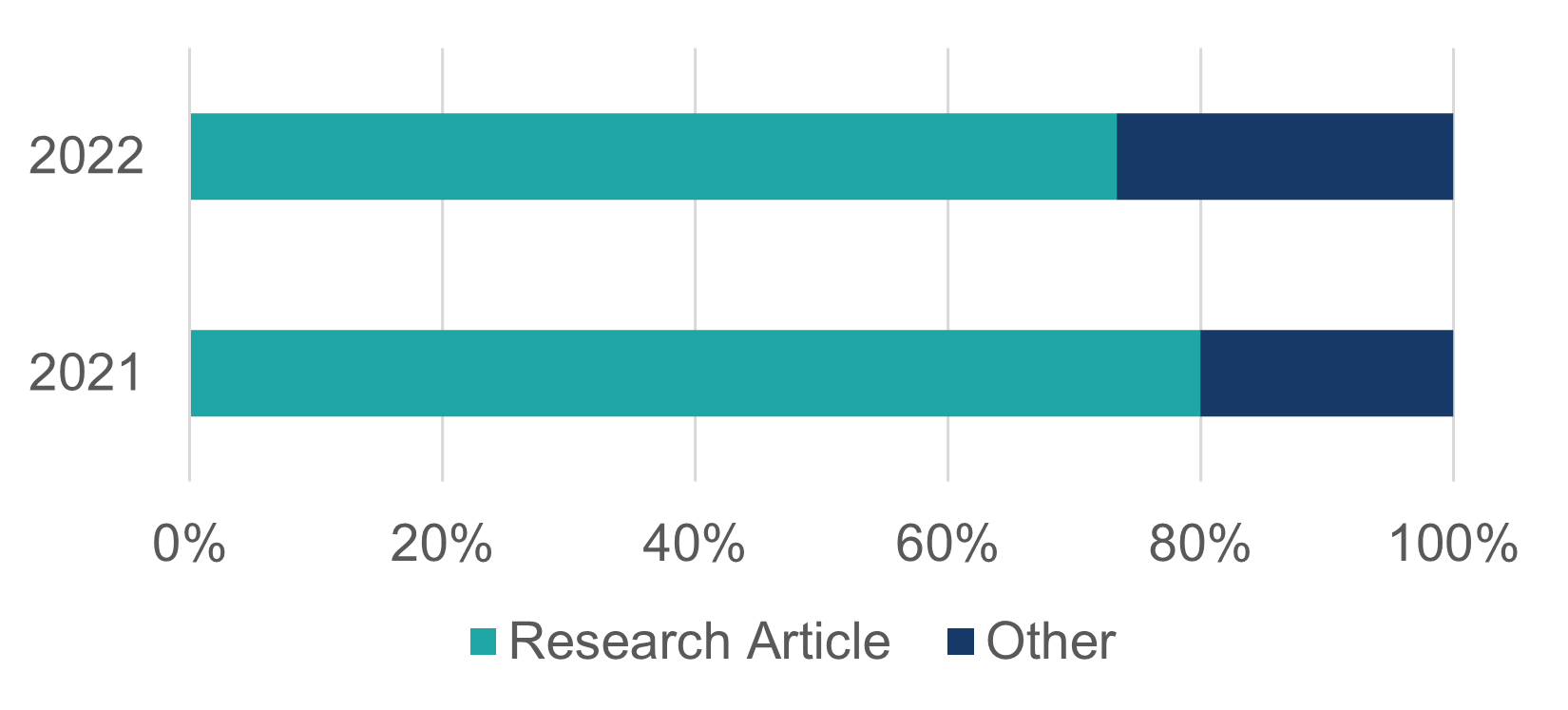
Figure 3. Share of the original articles compared to all others.
International coverage:
All authors of published articles in JBGS originate or work in research and academic institutions from 2 continents and 6 countries as follows: North America (USA) and Europe (Bulgaria, Serbia, Slovakia, Spain, and Romania). The total number of Bulgarian authors is significantly decreasing from 38 in 2021 to 20 in 2022, authors form the U.S. are slightly increasing from 2 in 2021 to 3 in 2022 (Fig. 4).
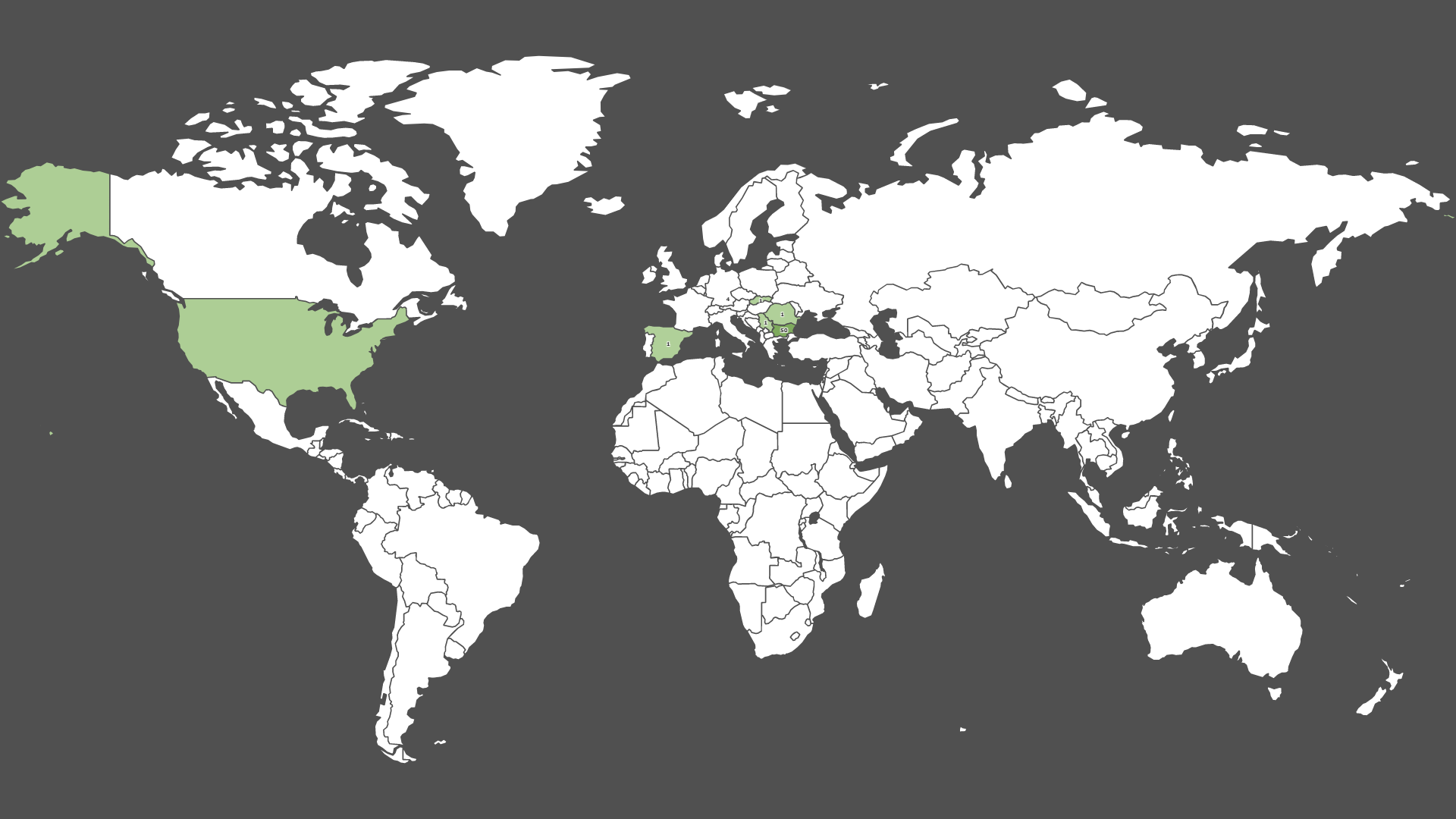
Figure 4. International coverage.
Article views:
The high-technological platform ARPHA provided JBGS the opportunity to track reader’s interactions with journal publications. That is possible through available statistics for XML, HTML and PDF data views. It shows that PDF article views increased about 5 times just in 1 year (Fig. 5) – from 3928 in 2021 to 19190 in 2022! The most significant change occurs in XML statistics where article views increased almost 10 times – from 390 in 2021 to 3817 in 2022.
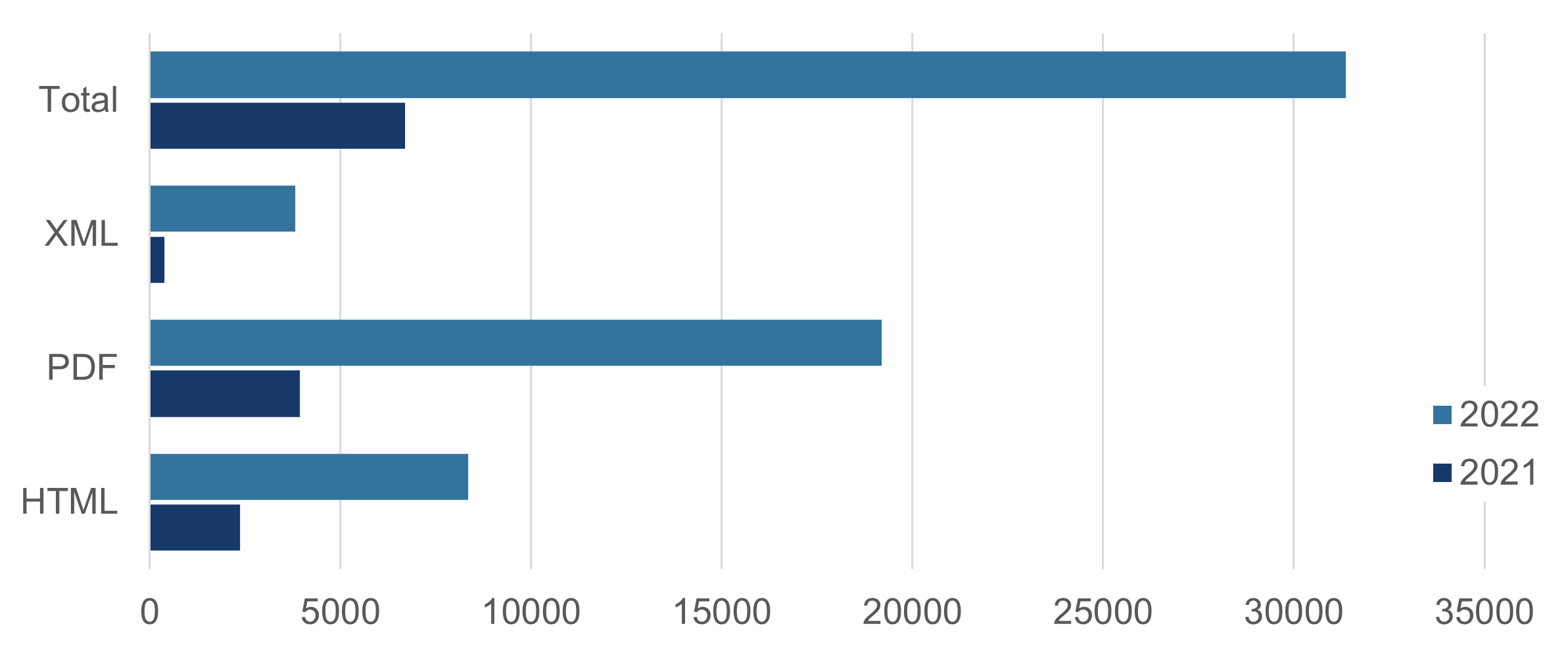
Figure 5. Article views.
Average article production times:
The article production process requires involvement of all existing user roles in the journal’s platform: authors, reviewers, editors and technicians. The process is mainly forced by the Editorial Board. The Managing Editor and a Deputy-Editor-in-Chief are taking care for timing; transparency, quality and ethics of the process; selection of subject editors, etc. as described in journal’s policy. According to predefined indicative production timing (Nedkov et al, 2020) and the ARPHA platform settings, the average time from submission to publication of a manuscript varies between 2 and 3 months (Fig. 6).
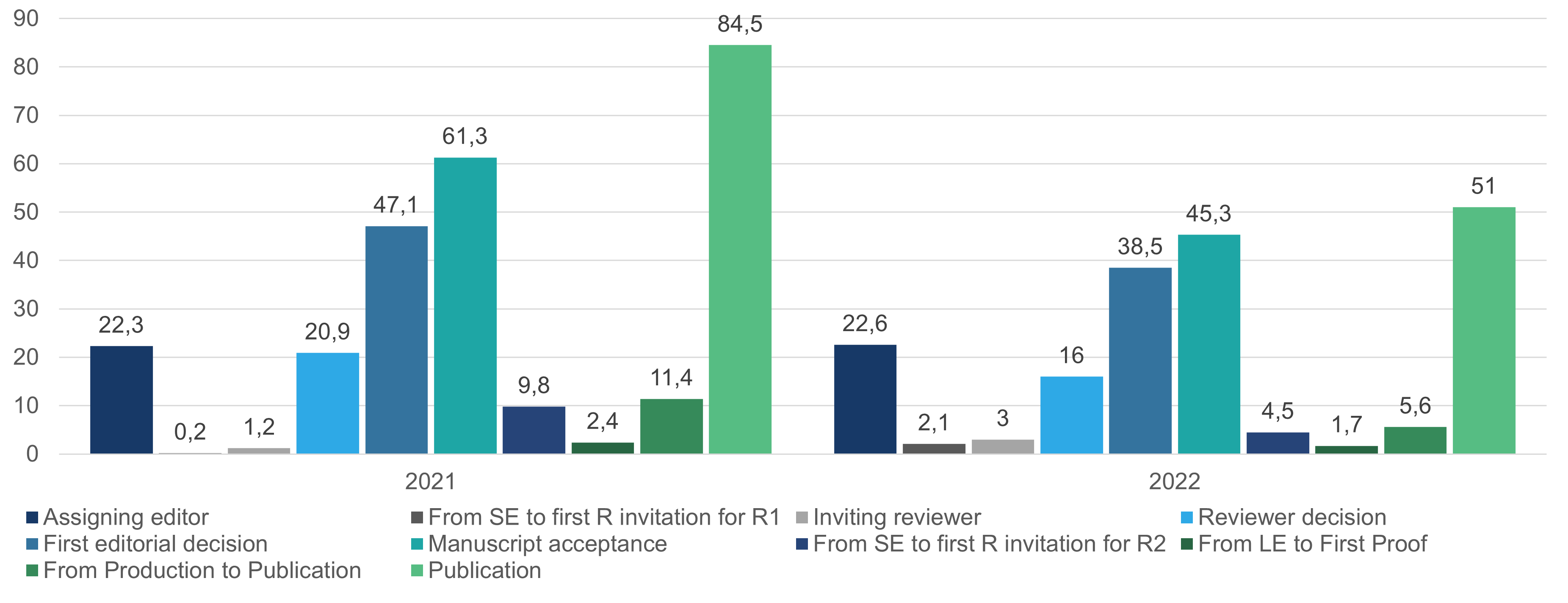
Figure 6. Average turnaround time for published articles only.
Indexing and archiving:
All the above-mentioned statistical results could be better explained with the growing journal audience incl. authors, reviewers, editors and readers, and more precisely with the number of the databases and platforms where JBGS is being indexed and archived. The total number of databases where the journal is indexed increased from 16 at the end of 2021 to 28 by the end of 2022. The most recent indexes which approved JBGS are the Directory of Open Access Journals (DOAJ) and the European Reference Index for the Humanities (ERIH PLUS).
By Hristina Prodanova
---
References:
Nedkov S, Prodanova H, Naydenov K (2020) Journal of the Bulgarian Geographical Society: past, present and future. Journal of the Bulgarian Geographical Society 43: 107-120. https://geography.bg/publication/magazines/item/516-vol43-2020-17
Nedkov S, Pickles J, Naydenov K, Prodanova H (2021) Journal of the Bulgarian Geographical Society: the new vision and perspectives. Journal of the Bulgarian Geographical Society 44: 3-5. https://doi.org/10.3897/jbgs.e68981
